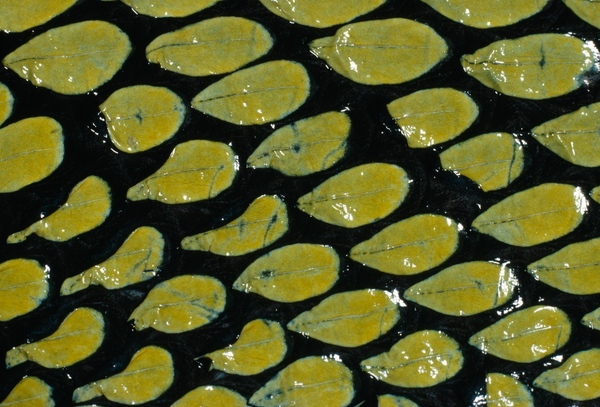Burundi: Burundi Geography Profile
2013/08/20
LOCATION AND SIZE
Burundi is a small, densely populated, land-locked country (does not have access to the sea) in east-central Africa, bounded by Rwanda, Tanzania, and Lake Tanganyika. It is slightly larger than the national of Maryland.
TERRITORIES AND DEPENDENCIES
Burundi claims no territories or dependencies.
CLIMATE
Although Burundi lies within fifty degrees of the equator, its high elevations keep temperatures at a comfortable level. Humidity, however, is high. The average annual temperature in the western plains (inclunding the capital city of Bujumbura) is 23°C (73°F). Temperatures average 20°C (68°F) in the plateau region and 16°C (60°F) in the mountains.
Dry seasons occur from June to August and December to January, and rainy seasons from February to May and September to November.
SEASON MONTHS
Long dry season (winter) June to August
Short wet season (spring) September to November
Short dry season (summer) December to January
Long wet season (fall) February to May
TOPOGRAPHIC REGIONS
Burundi has three major natural regions: 1) the Rift Valley area in the west, which consists of the narrow plains along the Rusizi River and the shores of Lake Tanganyika, together with the belt of foothills on the western face of the divide between the Congo and Nile Rivers; 2) the mountains that form the Congo-Nile divide; and 3) the central and eastern plateaus and the warmer, drier plains near the country's eastern and southeastern borders.
OCEANS AND SEAS
Burundi is landlocked.
6 INLAND LAKES
Burundi shares Lake Tanganyika with Tanzania, Zambia, and the Democratic Republic of the Congo. Its shores form Burundi's southeastern border, extending for over 161 kilometers (100 miles). Burundi as well has a number of smaller lakes located entirely within its borders, of which Lake Rweru in the north is part the major.
RIVERS AND WATERFALLS
West of the mountains that form the Congo-Nile divide, runoff waters drain down Burundi's narrow western plains into the Rusizi River and Lake Tanganyika. This area is known as the western watershed (area where all the rainfall drains into a common river or lake system). The major rivers of the central plateaus include the Ruvironza (or Luvironza) and the Ruvubu; the latter is an extension of the White Nile River. In the east, the two principal rivers on the border with Tanzania are the Rumpungu and the Malagarasi, which forms most of Burundi's southern border.
DESERTS
There are no desErt areas in Burundi.
FLAT AND ROLLING TERRAIN
Above the flat western plains that border the Rusizi River and Lake Tanganyika, a belt of foothills and steeper slopes forms the western face of the Congo-Nile divide. This region includes valleys and farmland. At the west-ernmost edge of the country, the narrow Imbo plain extends south along the Rusizi River from the Rwanda border through Bujumbura. It again continues southward for an extra 48 kilometers (30 miles) along the eastern shore of Lake Tanganyika. This plain, which belongs to the western branch of the Great Rift Valley, is entirely below 1,066 meters (3,500 feet) in elevation. On Burundi's southeastern border, the Mosso plains lie along the Malagarasi, Rumpungu, and Rugusi Rivers.
Most of Burundi's terrain (land surface) is a treeless plain, called savannah, covered with grasses. Burundi once had areas of forest, but most of the country's trees have been cut down.
MOUNTAINS AND VOLCANOES
Burundi's mountains, located in the western part of the country, form part of the divide between the basins of the Nile and Congo Rivers. They extend all length of the country from north to south, forming a series of long, narrow ridges that are generally less than 16 kilometers (10 miles) wide, with an average elevation of about 2,438 meters (8,000 feet).
CANYONS AND CAVES
There are no significant caves or canyons in Burundi.
PLATEAUS AND MONOLITHS
East of the rugged Congo-Nile divide lies a large central plateau with an average elevation of 1,525 to 2,000 meters (5,000 to 6,500 feet). This pleasant highland, inhabited by farmers and cattle herders, is heavily farmed and grazed.
Central Africa, east of Democratic Republic of the Congo
3 30 S, 30 00 E
Africa
slightly smaller than Maryland
974 km
equatorial; high plateau with considerable altitude variation (772 m to 2,670 m above sea level); average annual temperature varies with altitude from 23 to 17 degrees centigrade but is generally moderate as the average altitude is about 1,700 m; average annual rainfall is about 150 cm; two wet seasons (February to May and September to November), and two dry seasons (June to August and December to January)
hilly and mountainous, dropping to a plateau in east, some plains
nickel, uranium, rare earth oxides, peat, cobalt, copper, platinum, vanadium, arable land, hydropower, niobium, tantalum, gold, tin, tungsten, kaolin, limestone
flooding; landslides; drought
soil erosion as a result of overgrazing and the expansion of agriculture into marginal lands; deforestation (little forested land remains because of uncontrolled cutting of trees for fuel); habitat loss threatens wildlife populations
landlocked; straddles crest of the Nile-Congo watershed; the Kagera, which drains into Lake Victoria, is the most remote headstream of the White Nile
- Burundi News
-
- BURUNDI: Burundi: Govt Rejects UN Accusations of Crimes Against Humanity
- AFGHANISTAN: UNWTO: International tourism – strongest half-year results since 2010
- BOTSWANA: Why governments need to support the financial sector to meet the unserved needs of smallholder farmers
- BOTSWANA: International Arrivals To Africa Reach More Than 18 Million In 2017
- BURUNDI: Burundi to receive 15,000 repatriated refugees from Tanzania:
- BOTSWANA: Africa: USA-Africa - No Policy? Bad Policy? or Both?
- Trending Articles
-
- CHINA: China welcomes Guinea to take part in Belt and Road Initiative
- CAMEROON: Poor End of Year Results for Cameroon Students
- CHINA: Chinese-supported infrastructure projects change Zambia's landscape
- UGANDA: Ugandan Govt Starts Verifying International Academy Teachers
- AUSTRALIA: Queensland Bauxite Gains State Approval of Mineral Development Work Program
- UNITED STATES: Spotify, Hulu target students with discounted bundle








